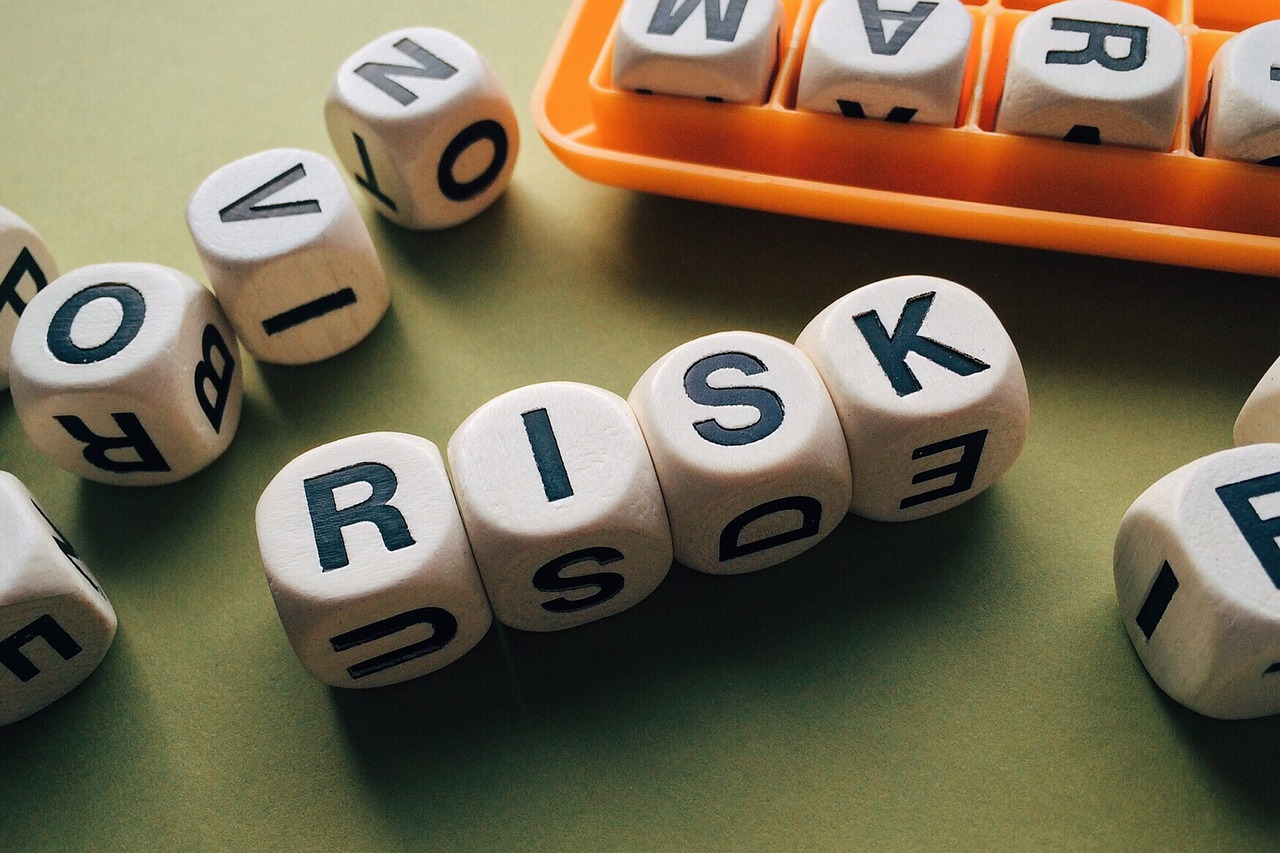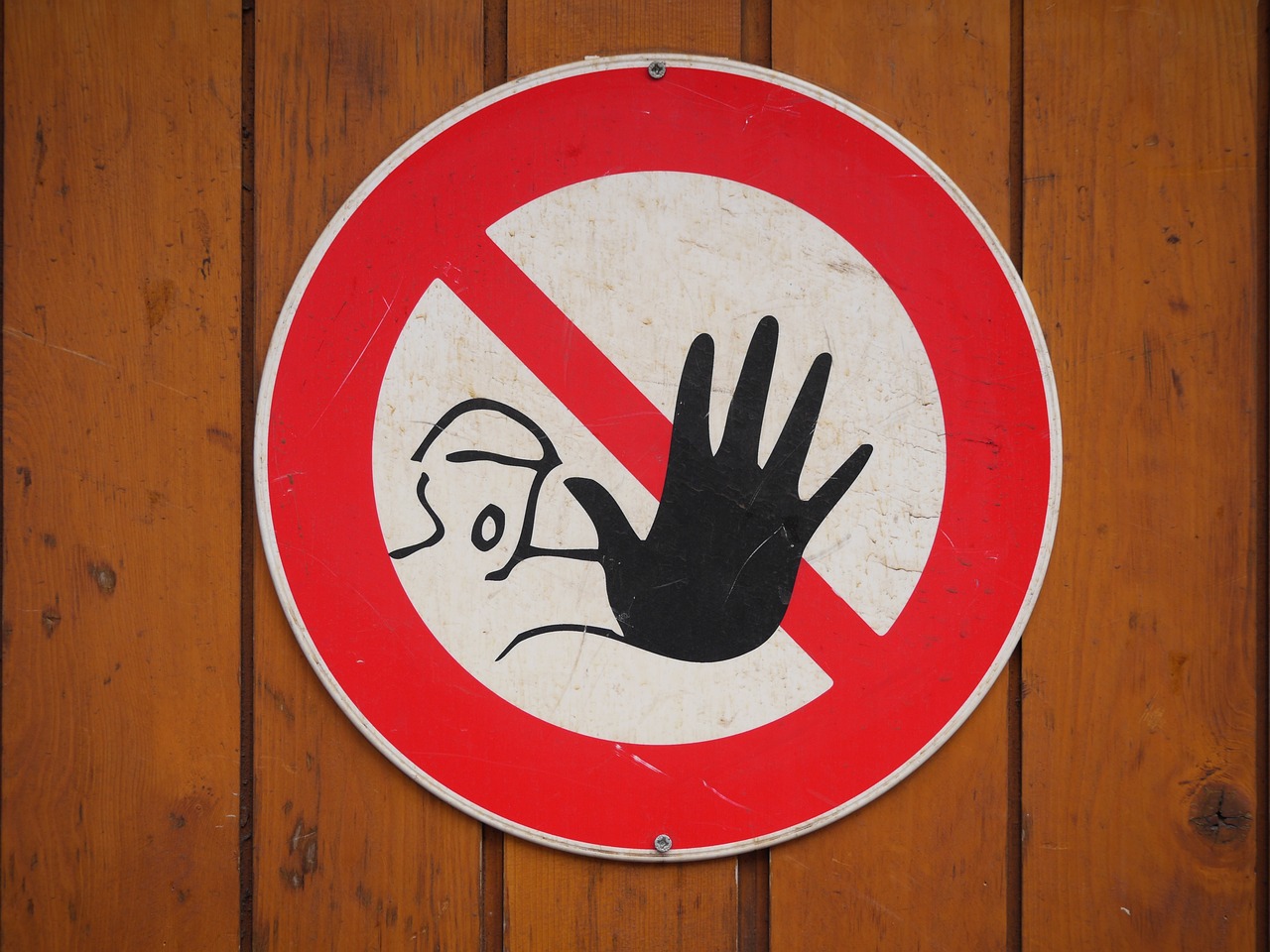Secrets of Human Behavior that Influence Safety Measures
In our daily lives, safety measures are often taken for granted. We buckle our seatbelts, wear helmets, and follow safety signs without a second thought. But have you ever wondered what really drives these behaviors? The truth is, human behavior is a complex tapestry woven from emotions, social influences, and cognitive biases. Understanding these elements is crucial for enhancing safety protocols across various environments, be it at home, in the workplace, or in public spaces. By delving into the secrets of human behavior, we can uncover key insights that not only promote a culture of safety but also encourage individuals to actively participate in their own well-being.
Imagine walking into a workplace where everyone adheres to safety protocols not out of fear of punishment, but because they genuinely believe in the importance of safety. This ideal scenario can be achieved by recognizing and addressing the underlying factors that influence safety behaviors. From the way we perceive risks to the social dynamics that shape our decisions, each aspect plays a pivotal role in how safety measures are implemented and followed. By fostering an environment that emphasizes safety, organizations can create a culture where safety is not just a requirement, but a shared value.
As we explore the intricate relationship between human behavior and safety measures, we will uncover the psychological factors that shape our understanding of risk, the impact of social influence, and the emotional drivers behind compliance. Each of these components is essential for creating effective safety protocols that resonate with individuals on a personal level. So, buckle up as we embark on this enlightening journey into the secrets of human behavior that can significantly influence safety measures!
Risk perception is not just about the actual danger; it’s how we, as individuals, interpret that danger. Our understanding of risk is often skewed by various psychological factors, such as personal experiences, media influence, and even cultural background. For instance, if someone has never experienced a car accident, they might underestimate the importance of wearing a seatbelt. This disconnect can lead to dangerous behaviors that compromise safety. By educating individuals about the realities of risk and the importance of safety measures, we can bridge the gap between perception and action.
Social influence is a powerful force that can either promote or hinder safety compliance. Have you ever noticed how people tend to follow the crowd? This phenomenon is particularly evident in workplace settings, where peer pressure can dictate behaviors. When safety becomes a shared value among colleagues, compliance increases. However, if the group norm leans towards risk-taking, individuals may feel compelled to abandon safety protocols to fit in. Understanding these dynamics is crucial for organizations aiming to foster a culture of safety.
Peer pressure can manifest in both positive and negative ways. On one hand, a supportive group can encourage individuals to adhere to safety measures, creating a ripple effect of responsible behavior. On the other hand, negative peer pressure can lead to reckless choices. For example, if a team member decides to ignore safety protocols, others may follow suit to avoid being seen as overly cautious. Organizations must recognize the influence of peer dynamics and actively promote positive safety behaviors through training and team-building exercises.
Establishing strong group norms around safety is essential for cultivating a culture of safety within teams and organizations. When safety becomes a shared expectation, individuals are more likely to adhere to protocols. This can be achieved by regularly communicating the importance of safety, celebrating compliance, and addressing violations promptly. A culture that prioritizes safety not only protects individuals but also enhances overall productivity and morale.
Leadership plays a pivotal role in shaping safety behaviors within organizations. Effective leaders inspire commitment to safety measures by modeling safe behaviors themselves and communicating the importance of safety to their teams. When leaders prioritize safety, it sends a clear message that safety is a core value of the organization. This commitment from the top can significantly enhance the overall safety culture, encouraging individuals to take ownership of their safety responsibilities.
In today’s digital age, social media can amplify safety messages or misinformation. A single post can sway public perception, either promoting adherence to safety measures or spreading fear and confusion. It’s crucial for organizations to leverage social media as a tool for accurate communication about safety protocols. By sharing real stories, safety tips, and expert advice, organizations can influence public perceptions positively and encourage safer behaviors.
Cognitive biases often cloud judgment and decision-making regarding safety. These biases can lead individuals to make choices that compromise their safety or the safety of others. By recognizing these biases, we can better understand how they affect our behaviors and develop strategies to mitigate their impact. Awareness is the first step in fostering a culture of safety that empowers individuals to make informed decisions.
Optimism bias leads individuals to underestimate risks, believing that bad things are less likely to happen to them compared to others. This cognitive distortion can significantly affect safety practices. For instance, someone may choose not to wear a helmet while cycling, thinking, "Accidents happen to others, not me." To combat this bias, it is essential to promote awareness and education about the real risks involved in everyday activities.
Confirmation bias can skew perceptions of safety data. Individuals may selectively seek information that reinforces their beliefs, ignoring evidence that contradicts their views. For instance, someone might focus on stories that downplay the dangers of a particular activity while dismissing statistics that highlight the risks. Encouraging critical thinking and presenting balanced information can help individuals make more informed safety decisions.
Emotions play a significant role in how individuals respond to safety measures. Feelings of fear, anxiety, and trust can either motivate compliance or lead to avoidance behaviors. Understanding these emotional drivers is essential for creating effective safety protocols that resonate with individuals on a personal level.
Fear can be a powerful motivator for compliance with safety measures. However, excessive fear may lead to avoidance behaviors, where individuals choose to ignore safety protocols altogether. Striking the right balance between instilling a healthy respect for risks while not overwhelming individuals with fear is crucial for promoting safety adherence. This can be achieved through positive reinforcement and education about the benefits of safety measures.
Trust is essential for compliance with safety measures. When individuals trust that safety protocols are effective and that their leaders are committed to their well-being, they are more likely to adhere to those measures. Building and maintaining trust within organizations requires transparent communication, consistent enforcement of safety protocols, and a genuine commitment to employee safety.
- What is risk perception? Risk perception refers to how individuals interpret and understand risks, which can affect their behavior regarding safety measures.
- How does social influence impact safety compliance? Social influence can either encourage or discourage adherence to safety protocols, depending on group norms and peer pressure.
- What are cognitive biases? Cognitive biases are mental shortcuts that can lead to irrational decision-making, affecting how individuals perceive risks and make choices related to safety.
- Why is trust important in safety protocols? Trust in safety measures enhances compliance, as individuals are more likely to follow protocols they believe are effective and backed by their leaders.

[Understanding Risk Perception]
Risk perception is a fascinating and complex psychological phenomenon that significantly influences how we respond to safety measures. At its core, it encompasses the way individuals interpret and react to potential hazards in their environment. But why is this understanding so crucial? Well, it shapes not only our personal safety behaviors but also the effectiveness of safety protocols in various settings. Imagine walking into a construction site: some people might feel a rush of adrenaline and excitement, while others might be gripped by fear. This variance in perception can lead to dramatically different choices regarding safety compliance.
Several psychological factors contribute to how we perceive risk, including personal experiences, cultural background, and even media influence. For instance, if someone has had a negative experience with a safety incident, they may develop a heightened sense of risk in similar situations. Conversely, individuals who have never encountered such risks may dismiss warnings as exaggerated. This discrepancy can create a chasm between how safety measures are designed and how they are received by the public.
To illustrate this point, consider the following table that outlines some key factors influencing risk perception:
| Factor | Description |
|---|---|
| Personal Experience | Past encounters with risks can heighten sensitivity and compliance. |
| Cultural Background | Different cultures may have varying thresholds for risk acceptance. |
| Media Influence | How risks are portrayed in the media can shape public perception. |
| Social Norms | Community standards can dictate what is considered safe or risky. |
Furthermore, our perception of risk is often clouded by various cognitive biases. For example, the availability heuristic suggests that people tend to judge the likelihood of an event based on how easily they can recall similar instances. If a person frequently hears about accidents in the news, they might overestimate the risk of those events happening in their own lives. This can lead to either unnecessary fear or a false sense of security, both of which can influence compliance with safety measures.
In essence, understanding risk perception is not just an academic exercise; it has real-world implications. By identifying the psychological factors at play, organizations can tailor their safety protocols to better resonate with individuals. This might involve using relatable messaging, providing training that addresses personal experiences, or leveraging social norms to encourage compliance. After all, when people feel understood and acknowledged, they are more likely to embrace safety measures rather than resist them.
Ultimately, fostering a culture of safety requires not only clear communication but also a deep understanding of how human behavior interacts with risk perception. As we delve deeper into this topic, it becomes evident that enhancing safety measures is as much about psychology as it is about protocols. So, the next time you think about safety, remember that perception is reality, and what we perceive can shape our actions in profound ways.

[The Role of Social Influence]
Social influence is a powerful force that shapes our behaviors and decisions, especially when it comes to safety measures. Think about it: how often have you changed your behavior because of the people around you? Whether it's wearing a seatbelt because your friends do or following safety protocols at work because everyone else is on board, social dynamics play a pivotal role in our adherence to safety standards. In this section, we will dive into the various aspects of social influence that can either promote or hinder compliance with safety measures.
One of the key elements of social influence is peer pressure. It’s not just something we associate with adolescence; it permeates all age groups and environments. When individuals find themselves in a group setting, they often feel compelled to conform to the behaviors of their peers. This can lead to positive outcomes, such as increased adherence to safety protocols, or negative consequences, where individuals may disregard safety measures to fit in. For instance, in a workplace where employees routinely skip safety gear, newcomers may feel pressured to do the same, jeopardizing their safety. It’s essential to recognize this dynamic and leverage it to foster a culture of safety.
Equally important are group norms. These are the unwritten rules that govern behavior within a group. Establishing strong safety norms can significantly enhance compliance. When a team collectively values safety, individuals are more likely to embrace safety measures as part of their identity. Imagine a construction site where the norm is to wear hard hats and safety vests; this shared expectation not only protects workers but also reinforces a culture that prioritizes safety. Organizations should actively cultivate these norms through training sessions, discussions, and visible leadership commitment to safety practices.
Speaking of leadership, it plays a crucial role in shaping safety behaviors. Effective leaders can inspire their teams to prioritize safety by modeling the behaviors they wish to see. When leaders consistently demonstrate a commitment to safety—such as adhering to protocols and encouraging open discussions about safety concerns—employees are more likely to follow suit. This creates a ripple effect, where the commitment to safety becomes ingrained in the workplace culture. A strong safety culture, driven by leadership, fosters an environment where every individual feels responsible for their own safety and the safety of their colleagues.
In today’s digital age, social media has emerged as a significant player in shaping public perceptions of safety. Online platforms can amplify safety messages, but they can also spread misinformation. For example, a viral post about a safety hazard can lead to widespread fear, prompting individuals to take unnecessary precautions. Conversely, accurate information shared through social media can educate the public and encourage compliance with safety measures. It’s crucial for organizations to actively engage with their audiences online, ensuring that accurate and helpful safety information is readily available.
In summary, social influence is a multifaceted aspect of human behavior that impacts safety compliance. By understanding the dynamics of peer pressure, group norms, leadership influence, and the role of social media, organizations can better design their safety protocols and foster an environment where safety is a shared responsibility. It's not just about individual actions; it’s about creating a community that values and prioritizes safety.
- How can organizations effectively leverage social influence to improve safety compliance? Organizations can promote safety compliance by establishing strong group norms, encouraging peer support, and demonstrating leadership commitment to safety practices.
- What role does social media play in shaping safety perceptions? Social media can amplify safety messages and misinformation, making it essential for organizations to engage with their audiences to provide accurate information.
- How can peer pressure be a positive force in promoting safety? Positive peer pressure can encourage individuals to adhere to safety protocols, especially in environments where safety is prioritized as a group norm.

[Peer Pressure and Compliance]
Peer pressure is a powerful force that can significantly influence safety behaviors in various environments, particularly in workplaces where teamwork and collaboration are essential. Imagine a scenario where a group of employees is working on a project, and one member decides to skip safety protocols to save time. This decision can create a ripple effect, leading others to follow suit, even if they initially intended to adhere to the rules. This phenomenon illustrates how the desire to fit in and be accepted can sometimes overshadow individual judgment, resulting in compromised safety.
In many cases, peer pressure manifests in two distinct ways: positive peer pressure and negative peer pressure. Positive peer pressure occurs when individuals encourage one another to follow safety protocols, creating a culture of compliance and vigilance. For example, if team members regularly remind each other to wear protective gear or report unsafe conditions, it fosters a sense of collective responsibility. On the other hand, negative peer pressure can lead to risky behaviors, where individuals feel compelled to disregard safety measures to gain approval from their peers.
To better understand the dynamics of peer pressure in safety compliance, consider the following table that outlines the effects of positive and negative peer pressure:
| Type of Peer Pressure | Effects on Safety Compliance |
|---|---|
| Positive Peer Pressure | Encourages adherence to safety protocols, promotes accountability, and enhances team cohesion. |
| Negative Peer Pressure | Leads to risky behaviors, increases likelihood of accidents, and undermines safety culture. |
To combat negative peer pressure and promote a culture of safety, organizations can implement several strategies. Firstly, fostering open communication among team members is crucial. When employees feel comfortable voicing concerns or questioning unsafe practices, it can help mitigate the influence of negative peer pressure. Additionally, organizations should recognize and reward positive safety behaviors. By highlighting individuals or teams that exemplify safe practices, companies can create role models who inspire others to follow suit.
Moreover, effective training programs can equip employees with the knowledge and skills necessary to make informed decisions about safety. When individuals understand the importance of compliance and the potential consequences of ignoring safety measures, they are less likely to succumb to peer pressure that encourages unsafe practices. Ultimately, creating a supportive environment where safety is valued over conformity can transform peer pressure from a potential hazard into a powerful tool for promoting compliance.
In conclusion, peer pressure is a double-edged sword in the realm of safety compliance. While it can lead to both positive and negative outcomes, organizations have the power to shape the narrative. By fostering a culture of safety, encouraging open dialogue, and recognizing positive behaviors, companies can harness the influence of peer pressure to enhance safety measures and protect their employees.
- What is peer pressure? Peer pressure refers to the influence exerted by a peer group on its individual members to behave in a manner similar to them.
- How does peer pressure affect safety compliance? Peer pressure can either encourage adherence to safety protocols through positive reinforcement or lead to risky behaviors through negative influences.
- What are some ways to promote positive peer pressure? Organizations can promote positive peer pressure by fostering open communication, recognizing safe behaviors, and providing effective training.
- Can peer pressure be beneficial in a workplace setting? Yes, when harnessed correctly, peer pressure can create a culture of safety where employees encourage each other to adhere to safety measures.

[Group Norms and Safety Culture]
Establishing strong group norms is not just a formality; it’s the backbone of a thriving safety culture within any organization. When people feel that safety is a shared responsibility, they are more likely to engage in behaviors that promote well-being and protect themselves and their colleagues. Think of it like a team sport: if everyone on the team understands the playbook and commits to the game plan, the chances of winning increase dramatically. In this case, the “playbook” consists of the safety protocols and standards that everyone agrees to uphold.
Group norms around safety can manifest in various ways. For instance, when a team regularly discusses safety in meetings, shares near-miss incidents, or celebrates safety milestones, it creates an environment where safety is prioritized. This proactive approach not only enhances individual accountability but also fosters a sense of belonging and collective responsibility. When employees see their peers valuing safety, it reinforces their own commitment to adhere to safety measures.
Moreover, the role of leadership cannot be overstated in shaping these norms. Leaders who model safe behaviors and openly communicate the importance of safety create a ripple effect throughout the organization. Employees are more likely to follow suit when they see their leaders taking safety seriously. This alignment between leadership and group norms strengthens the overall safety culture, making it a core value rather than an afterthought.
In addition, it’s crucial to recognize that group norms can sometimes work against safety. If a team develops a norm where taking shortcuts is accepted or where safety concerns are brushed aside, it can lead to detrimental outcomes. Therefore, it’s essential to regularly assess and refine these norms to ensure they align with best practices in safety. Regular training sessions, open forums for discussion, and anonymous feedback mechanisms can help in identifying and correcting any negative group norms.
| Positive Norms | Negative Norms |
|---|---|
| Open communication about safety concerns | Ignoring safety protocols to meet deadlines |
| Regular safety training and drills | Belittling those who report safety issues |
| Celebrating safety achievements | Normalizing risky behaviors |
In conclusion, fostering a robust safety culture through strong group norms is essential for any organization aiming to minimize risks and enhance overall safety. It requires ongoing effort, commitment, and an open dialogue among all members of the organization. By nurturing a culture where safety is a shared value, organizations can not only protect their employees but also enhance productivity and morale. After all, a safe workplace is a happy workplace!
- What are group norms? Group norms are the unwritten rules and expectations that shape the behavior of individuals within a group.
- How can I promote a safety culture in my organization? Regular training, open discussions, and leading by example are effective ways to promote a safety culture.
- Why are group norms important for safety? They create a shared understanding and commitment to safety practices, which can significantly reduce risks and accidents.
- What role does leadership play in safety culture? Leaders set the tone for safety practices and influence the group's norms through their actions and communication.

[Influence of Leadership]
Leadership is more than just a title; it’s a profound influence that shapes the safety culture within organizations. The way leaders communicate, behave, and set expectations can either foster a positive safety environment or create a culture of negligence. Imagine a ship sailing through stormy waters; the captain’s decisions and actions can mean the difference between reaching the shore safely or capsizing. In the same way, effective leadership can steer an organization toward a robust safety culture.
One of the most significant ways leaders influence safety is through their communication styles. When leaders openly discuss safety protocols and emphasize their importance, they create an atmosphere where safety becomes a shared priority. This open dialogue encourages team members to voice their concerns and suggestions, leading to a more engaged workforce. Conversely, if leaders downplay safety or fail to address safety issues, it sends a message that safety is not a priority, which can lead to complacency and risky behaviors.
Moreover, leaders set the tone for safety compliance through their actions. When leaders practice what they preach—adhering to safety measures themselves—they establish credibility and trust. Team members are more likely to follow suit when they see their leaders donning safety gear, participating in safety training, or addressing safety violations promptly. This behavior reinforces the idea that safety is a collective responsibility.
Additionally, recognizing and rewarding safe behaviors can significantly boost morale and compliance. Leaders who celebrate safety achievements, whether through formal recognition programs or casual shout-outs during meetings, reinforce the importance of safety in everyday operations. This positive reinforcement not only motivates individuals but also strengthens the overall safety culture within the organization. As a result, employees feel valued and are more likely to prioritize safety in their daily tasks.
To illustrate the impact of leadership on safety culture, consider the following table:
| Leadership Actions | Impact on Safety Culture |
|---|---|
| Open Communication | Encourages transparency and trust among team members. |
| Leading by Example | Fosters accountability and commitment to safety protocols. |
| Recognizing Safe Behaviors | Boosts morale and promotes a proactive safety mindset. |
| Providing Training and Resources | Equips employees with the knowledge and tools needed for safe practices. |
In conclusion, the influence of leadership on safety measures cannot be overstated. Leaders have the power to shape the safety culture by promoting open communication, leading by example, recognizing safe behaviors, and providing necessary training. As organizations strive for safety excellence, investing in effective leadership is a crucial step toward fostering a culture where safety is prioritized, and every team member feels responsible for upholding safety standards.
- How can leaders effectively communicate safety protocols?
Leaders can hold regular safety meetings, send out newsletters, and use visual aids to keep safety at the forefront of everyone's mind. - What role does recognition play in safety compliance?
Recognition boosts morale and encourages employees to prioritize safety by showing that their efforts are valued. - How can leaders demonstrate their commitment to safety?
By actively participating in safety training, adhering to safety measures, and addressing safety concerns promptly.

[Social Media's Impact on Safety Behavior]
In today's digital age, social media acts as a double-edged sword when it comes to safety behavior. On one hand, it serves as a powerful tool for disseminating critical safety information, while on the other, it can propagate misinformation that can lead to dangerous behaviors. Imagine scrolling through your feed and stumbling upon a viral post claiming that a certain safety measure is unnecessary—this can easily sway public perception and behavior. The rapid spread of information, whether accurate or not, can significantly influence how individuals respond to safety protocols.
One of the most striking aspects of social media is its ability to create echo chambers, where users are exposed only to information that aligns with their existing beliefs. This phenomenon can lead to a skewed understanding of safety measures, as individuals may disregard evidence-based guidelines in favor of popular opinion. For instance, during health crises, misinformation can spread like wildfire, causing panic or complacency among the public. It's essential to recognize that the emotional responses elicited by social media posts can either motivate compliance or foster resistance to safety measures.
Moreover, the role of influencers and public figures cannot be understated. When a well-known personality endorses a safety protocol, it can enhance its credibility and encourage followers to adopt similar behaviors. Conversely, if they dismiss safety measures, their followers might be more inclined to disregard them as well. This creates a complex web of influence that can either bolster or undermine safety efforts.
To illustrate the impact of social media on safety behavior, consider the following table that outlines the contrasting effects of social media on public safety perceptions:
| Impact of Social Media | Positive Effects | Negative Effects |
|---|---|---|
| Information Dissemination | Rapid sharing of safety tips and emergency alerts | Spread of misinformation and rumors |
| Community Engagement | Building a sense of community around safety initiatives | Polarization of opinions leading to division |
| Influencer Endorsement | Increased compliance through trusted voices | Potential for harmful behaviors if influencers mislead |
In conclusion, the impact of social media on safety behavior is profound and multifaceted. As users of these platforms, we must be vigilant about the information we consume and share. By fostering a culture of critical thinking and promoting accurate safety messages, we can harness the power of social media to enhance safety compliance rather than hinder it. So, the next time you see a post about safety, ask yourself: is this information reliable? Your response could make all the difference in promoting a safer environment for everyone.
- How can I verify the accuracy of safety information on social media?
Always check the source of the information. Look for posts from reputable organizations or experts in the field. - What role do influencers play in shaping safety behaviors?
Influencers can significantly sway public opinion, either positively by promoting safety measures or negatively by spreading misinformation. - How can I encourage others to follow safety protocols shared on social media?
Engage with your community by sharing verified information and discussing the importance of adherence to safety measures.

[Cognitive Biases in Safety Decision-Making]
Cognitive biases can significantly cloud our judgment when it comes to safety decision-making. These mental shortcuts, while often helpful in everyday situations, can lead us astray in critical moments. Understanding these biases is crucial for enhancing safety measures and ensuring that individuals make informed decisions that prioritize their well-being.
One of the most prevalent cognitive biases affecting safety is the optimism bias. This bias leads individuals to believe that they are less likely to experience negative outcomes compared to others. For instance, someone might think that while accidents happen, they are unlikely to be involved in one. This false sense of security can result in risky behaviors, such as neglecting to wear safety gear or ignoring safety protocols. It’s like thinking that a storm won’t hit your town just because it hasn’t happened before; the reality is that every location is susceptible to unpredictable weather.
Another significant bias is confirmation bias, which causes individuals to favor information that confirms their pre-existing beliefs while disregarding evidence that contradicts them. In safety contexts, this can manifest when individuals selectively seek out data that supports their view that a particular safety measure is unnecessary. For example, if someone believes that a specific safety training is ineffective, they might only pay attention to anecdotal evidence that reinforces this belief, ignoring statistical data that shows its effectiveness. This can create a dangerous environment where safety measures are undermined due to skewed perceptions.
To illustrate the impact of these biases, consider a workplace scenario: an employee may believe that wearing a hard hat is unnecessary because they have never seen anyone injured without one. This outlook not only reflects optimism bias but can also be reinforced by confirmation bias if they only notice instances where hard hats were not worn without any negative consequences. This cycle can lead to a culture of complacency, where safety measures are viewed as optional rather than essential.
It’s essential to address these biases in safety training and communication. Organizations can implement strategies to mitigate the effects of cognitive biases, such as:
- Education: Providing comprehensive training that highlights the importance of safety measures and the risks associated with ignoring them.
- Encouraging Critical Thinking: Promoting an environment where questioning and discussing safety protocols is welcomed can help combat biases.
- Data-Driven Decision Making: Utilizing objective data and statistics to inform safety practices can help counteract the influence of personal biases.
By understanding and addressing cognitive biases, organizations can foster a more robust safety culture. This involves not only educating employees about the potential pitfalls of their thinking but also creating an environment where safety is prioritized and valued. Remember, safety is not just a set of rules; it is a mindset that requires constant vigilance and awareness.
Q: What are cognitive biases?
A: Cognitive biases are systematic patterns of deviation from norm or rationality in judgment, often affecting decision-making processes.
Q: How do cognitive biases affect safety?
A: They can lead individuals to underestimate risks or disregard safety protocols, resulting in unsafe behaviors and environments.
Q: What can organizations do to mitigate cognitive biases?
A: Organizations can provide education, encourage critical thinking, and use data-driven decision-making to help employees recognize and counteract biases.
Q: Why is understanding cognitive biases important for safety culture?
A: Recognizing these biases helps create a more informed workforce that prioritizes safety and adheres to protocols, ultimately reducing incidents and enhancing overall safety.

[Optimism Bias]
Optimism bias is a fascinating psychological phenomenon that can significantly impact how we perceive risks and adhere to safety measures. Imagine standing on the edge of a cliff, looking down at the rocky abyss below. While some might feel a surge of fear, others might think, "It won't happen to me." This is optimism bias in action—an inherent tendency to believe that we are less likely to experience negative events compared to others. While a little optimism can be beneficial, especially in boosting morale, it can also lead to dangerous complacency when it comes to safety.
In various settings, from workplaces to public spaces, optimism bias often manifests as a false sense of security. For instance, individuals may underestimate the likelihood of accidents or emergencies, thinking that they are invulnerable. This mindset can lead to risky behaviors, such as neglecting to wear safety gear or disregarding safety protocols. The danger here is that when people believe they are less at risk, they may not take necessary precautions, ultimately compromising their safety and the safety of those around them.
Research shows that optimism bias is particularly prevalent among younger individuals, who may feel invincible and less susceptible to harm. This can be especially true in high-risk environments, such as construction sites or laboratories, where the consequences of ignoring safety measures can be dire. To illustrate this, consider the following table that highlights how different age groups perceive risks:
| Age Group | Perceived Risk Level | Actual Risk Level |
|---|---|---|
| 18-24 | Low | High |
| 25-34 | Moderate | Moderate |
| 35+ | High | Moderate |
This table reveals a stark contrast between perceived and actual risk levels across different age groups. Younger individuals often underestimate their exposure to danger, which can lead to a lack of adherence to safety protocols. To combat optimism bias, it's crucial to foster an environment where safety is prioritized and individuals are encouraged to recognize potential risks. This can be achieved through effective training programs that emphasize the importance of safety measures, regardless of age or experience.
Moreover, organizations can implement strategies to counteract optimism bias. For example, sharing real-life incidents and statistics can help illustrate the potential consequences of neglecting safety measures. When employees see that accidents can happen to anyone, they may be more likely to take safety seriously. Additionally, encouraging open discussions about safety concerns can create a culture where individuals feel comfortable acknowledging risks without fear of judgment.
In summary, while optimism bias can promote a positive outlook, it can also lead to dangerous underestimations of risk. By acknowledging this cognitive distortion and implementing proactive measures, individuals and organizations can enhance their commitment to safety. Remember, it's not just about feeling safe; it's about being safe. So the next time you find yourself thinking, "It won't happen to me," take a moment to reconsider. Your safety, and the safety of others, may depend on it.

[Confirmation Bias]
Confirmation bias is a fascinating psychological phenomenon that can significantly impact how individuals perceive safety data and make decisions regarding safety protocols. Essentially, this bias leads people to favor information that confirms their existing beliefs while disregarding or downplaying evidence that contradicts those beliefs. Imagine you're a driver who believes that wearing a seatbelt is unnecessary because you've never been in an accident. You might selectively remember stories of people who drove without seatbelts and emerged unscathed, while ignoring the multitude of data showing that seatbelts save lives. This selective perception can create a dangerous mindset, especially in environments where safety is paramount.
One of the most concerning aspects of confirmation bias is its ability to distort risk assessment. For instance, in workplaces where safety measures are frequently discussed, an employee who believes that the safety protocols are overblown may only seek out information that reinforces their skepticism. They might dismiss reports of accidents or near-misses as anomalies, rather than as critical data points that could inform better safety practices. This selective attention can lead to a culture where individuals feel justified in ignoring established safety measures, ultimately putting themselves and their colleagues at risk.
To illustrate the impact of confirmation bias on safety measures, consider the following table that outlines common scenarios and their consequences:
| Scenario | Confirmation Bias Response | Potential Consequence |
|---|---|---|
| Ignoring safety training | Believing training is unnecessary | Increased risk of accidents |
| Disregarding safety reports | Focusing on positive outcomes only | Failure to improve safety protocols |
| Overconfidence in personal judgment | Believing personal experience outweighs data | Higher likelihood of injury |
Addressing confirmation bias requires a proactive approach. Organizations can implement strategies such as regular training sessions that emphasize the importance of objective data and encourage open discussions about safety concerns. By fostering an environment where questioning and critical thinking are valued, teams can cultivate a culture that prioritizes safety over personal beliefs. It's crucial to remind everyone that safety protocols are not just arbitrary rules; they are based on extensive research and data aimed at minimizing risks.
In conclusion, while confirmation bias can cloud judgment and lead to dangerous decisions regarding safety, awareness and education can help mitigate its effects. By recognizing this bias and actively seeking out diverse perspectives, individuals and organizations can enhance their safety practices and promote a culture of vigilance and compliance. After all, when it comes to safety, it's better to be informed and cautious than to rely solely on personal beliefs that may be flawed.
- What is confirmation bias? Confirmation bias is the tendency to search for, interpret, and remember information in a way that confirms one's preexisting beliefs.
- How does confirmation bias affect safety? It can lead individuals to ignore critical safety information and dismiss protocols that are essential for preventing accidents.
- What can organizations do to combat confirmation bias? Organizations can foster a culture of open dialogue, provide regular training, and encourage employees to consider multiple perspectives when evaluating safety measures.

[Emotional Factors in Safety Compliance]
When it comes to safety compliance, it's not just about rules and regulations; emotions play a crucial role in how individuals respond to safety measures. Imagine walking into a workplace where the atmosphere is tense and filled with anxiety. Would you feel motivated to follow safety protocols, or would fear lead you to avoid certain situations altogether? This is the essence of how emotions shape our behavior regarding safety. Understanding this emotional landscape can help organizations create a more effective safety culture.
One of the most powerful emotions influencing safety compliance is fear. Fear can serve as a double-edged sword; on one hand, it can motivate individuals to adhere strictly to safety measures, while on the other hand, excessive fear can lead to avoidance behaviors. For instance, if employees are constantly bombarded with frightening statistics about workplace accidents, they may become overly cautious, potentially hindering their ability to perform tasks efficiently. This creates a paradox where the very emotion intended to protect them may inadvertently lead to decreased productivity and morale.
Moreover, the trust that employees have in safety protocols significantly impacts their willingness to comply. Trust is built over time through consistent communication, transparent practices, and visible commitment from leadership. When employees trust that the safety measures in place are effective and genuinely aimed at protecting them, they are more likely to engage with those measures. Conversely, if there is a lack of trust—perhaps due to past incidents where safety protocols were ignored or inadequately enforced—employees may become skeptical and disengaged. This skepticism can lead to a culture where safety is taken lightly, increasing the risk of accidents.
To illustrate how emotions intertwine with safety compliance, consider the following table that highlights key emotional factors and their potential impacts:
| Emotional Factor | Impact on Safety Compliance |
|---|---|
| Fear | Can motivate compliance or lead to avoidance behaviors. |
| Trust | Enhances willingness to follow safety protocols. |
| Anxiety | May cause distraction, reducing focus on safety measures. |
| Confidence | Encourages proactive safety behaviors and risk assessments. |
In conclusion, understanding the emotional factors at play in safety compliance is essential for creating a culture that prioritizes safety. Organizations should strive to foster an environment where employees feel safe, valued, and trusted. This can be achieved through open communication, leadership commitment, and supportive practices that address emotional concerns. By doing so, they not only enhance compliance but also contribute to a more engaged and productive workforce.
- How does fear influence safety compliance? Fear can motivate individuals to follow safety protocols, but excessive fear may lead to avoidance behaviors.
- Why is trust important in safety measures? Trust enhances the willingness to comply with safety protocols and fosters a culture of safety.
- What role does communication play in building trust? Consistent and transparent communication from leadership helps build trust in safety measures.

[Fear and Risk Aversion]
Fear is a powerful emotion that can significantly influence our behavior, especially when it comes to safety compliance. When individuals perceive a threat, whether it’s a physical danger or a psychological one, their instinct is often to protect themselves. This instinctual response can lead to increased adherence to safety measures, as people become more aware of potential risks. However, the relationship between fear and safety is not straightforward; it can sometimes create a paradox where excessive fear leads to avoidance behaviors. For instance, if someone is overly fearful of a particular hazard, they might avoid situations where that risk is present altogether, rather than taking proactive safety measures.
This phenomenon can be likened to the classic fight-or-flight response. In a workplace environment, if employees feel an exaggerated sense of fear regarding safety protocols, they might choose to ignore them altogether, believing that avoiding the situation is a safer option. This creates a dangerous cycle where fear undermines the very safety measures that are designed to protect them. It’s essential for organizations to strike a balance between fostering a healthy respect for risks while not instilling paralyzing fear that could deter compliance.
Moreover, the impact of fear on risk aversion can vary across different individuals. Some may respond positively to fear by becoming more vigilant and compliant with safety protocols, while others may react negatively, leading to a disregard for those very measures. Understanding this spectrum of responses is crucial for organizations looking to enhance their safety culture. Training programs that incorporate discussions about fear and its effects on behavior can be beneficial in helping employees navigate their emotions and make informed decisions regarding safety.
To illustrate the impact of fear on safety compliance, consider the following table that outlines the different responses to fear in a workplace setting:
| Response to Fear | Behavioral Outcome |
|---|---|
| Increased Vigilance | Higher compliance with safety measures |
| Paralysis by Analysis | Avoidance of situations that could trigger fear |
| Overreaction | Excessive caution leading to inefficiency |
| Desensitization | Ignoring safety protocols altogether |
Understanding these responses allows organizations to tailor their safety training and communication strategies effectively. By fostering an environment where employees feel safe to express their fears and concerns, organizations can create a culture of safety that encourages open dialogue and proactive risk management. Ultimately, addressing fear and its implications on risk aversion can lead to more effective safety practices and a healthier workplace environment.
- How can organizations reduce fear related to safety measures? Organizations can reduce fear by providing clear communication, regular training, and creating an open environment where employees feel comfortable discussing their concerns.
- What role does leadership play in addressing fear in the workplace? Leadership is crucial in modeling appropriate responses to fear, encouraging a culture of safety, and ensuring that safety protocols are seen as supportive rather than punitive.
- Can fear ever be beneficial in promoting safety? Yes, a moderate level of fear can heighten awareness and encourage compliance with safety measures. It’s about finding the right balance to ensure fear does not become counterproductive.

[Trust in Safety Protocols]
Trust in safety protocols is not just a checkbox on a compliance form; it’s the backbone of a culture that prioritizes safety. When individuals believe that the safety measures in place are effective and genuinely designed to protect them, they are far more likely to adhere to those measures. Think of it like a seatbelt in a car: if you trust that it will keep you safe in an accident, you're more inclined to buckle up every time you get in the vehicle. But what builds this trust? Is it merely the presence of rules, or is there something deeper at play?
First and foremost, transparency plays a critical role in establishing trust. Organizations that openly communicate the rationale behind safety protocols and involve employees in the development of these measures tend to foster a greater sense of ownership and responsibility. When employees understand the "why" behind safety rules, they are more likely to embrace them. For example, if a company implements a new safety procedure, sharing data on past incidents and how the new protocol addresses those risks can significantly enhance trust.
Furthermore, consistency is key. If safety protocols are enforced sporadically or if management fails to follow them, it sends a message that safety isn't a priority. This inconsistency can erode trust faster than a speeding bullet. Employees need to see leaders adhering to safety measures; it’s a powerful form of modeling behavior. When leaders demonstrate commitment, it creates a ripple effect, encouraging others to follow suit.
Another important factor is feedback. Organizations should create channels for employees to voice their concerns and suggestions regarding safety protocols. This two-way communication not only helps in refining safety measures but also reinforces the idea that employee input is valued. When people feel heard, their trust in the system grows. Moreover, regular training sessions that allow for discussions about safety can further enhance this trust. They provide a platform for employees to ask questions and clarify doubts, making them feel more secure in their understanding of the protocols.
To illustrate the impact of trust in safety protocols, consider the following table that outlines the benefits of fostering trust within an organization:
| Benefit | Description |
|---|---|
| Increased Compliance | Employees are more likely to follow safety measures when they trust their effectiveness. |
| Enhanced Morale | A trusting environment fosters a sense of security, leading to higher employee morale. |
| Reduced Incidents | Trust in safety protocols can lead to fewer workplace accidents and injuries. |
| Better Communication | Open dialogue about safety fosters a culture of continuous improvement. |
In conclusion, trust in safety protocols is a multifaceted issue that hinges on transparency, consistency, feedback, and leadership. Organizations that prioritize these elements are likely to create a robust safety culture where employees feel empowered to prioritize their own safety and that of their colleagues. It’s not just about having rules in place; it’s about creating an environment where those rules are respected, understood, and trusted. After all, a culture of safety is built on the foundation of trust, and without it, even the best safety measures can fall flat.
- What can organizations do to build trust in safety protocols?
Organizations can build trust by ensuring transparency, maintaining consistency, encouraging feedback, and actively involving employees in safety discussions. - How does leadership influence trust in safety measures?
Leaders set the tone for safety culture. When they model safe behaviors and prioritize safety, it instills trust among employees. - Why is employee feedback important for safety protocols?
Employee feedback helps organizations refine their safety measures, making them more effective and ensuring that employees feel valued and heard.
Frequently Asked Questions
- What is risk perception and why is it important for safety measures?
Risk perception refers to how individuals interpret and understand the risks associated with certain behaviors or environments. It's crucial for safety measures because it directly influences how people respond to warnings and protocols. If someone perceives a risk as low, they may not take necessary precautions, which can lead to accidents or unsafe situations.
- How does social influence affect safety compliance?
Social influence plays a significant role in safety compliance. Peer pressure, group norms, and social cues can either encourage or discourage adherence to safety protocols. For instance, if everyone in a workplace follows safety guidelines, an individual is more likely to do the same. Conversely, if peers disregard safety measures, it may lead to a culture of non-compliance.
- What are cognitive biases, and how do they impact safety decision-making?
Cognitive biases are mental shortcuts that can distort our judgment and decision-making. In the context of safety, biases like optimism bias can lead individuals to underestimate risks, while confirmation bias may cause them to ignore data that contradicts their beliefs. Understanding these biases is essential for improving safety practices and ensuring that individuals make informed decisions.
- How do emotions influence adherence to safety measures?
Emotions significantly impact how individuals respond to safety protocols. Feelings of fear can motivate compliance, but excessive fear might lead to avoidance behaviors, where individuals ignore or evade safety measures altogether. Additionally, trust in safety protocols is vital; if individuals believe in the effectiveness of safety measures, they are more likely to follow them.
- What role does leadership play in fostering a safety culture?
Leadership is pivotal in shaping a culture of safety within organizations. Effective leaders can inspire commitment to safety measures by modeling safe behaviors, communicating the importance of safety, and creating an environment where employees feel valued and heard. Strong leadership encourages a collective responsibility for safety among all team members.
- How can social media impact public perceptions of safety?
Social media can significantly amplify safety messages or misinformation. It has the power to shape public perception by spreading awareness about safety protocols or, conversely, by perpetuating myths that undermine safety. Accurate communication through social media is essential for promoting a culture of safety and ensuring that the public receives reliable information.



















